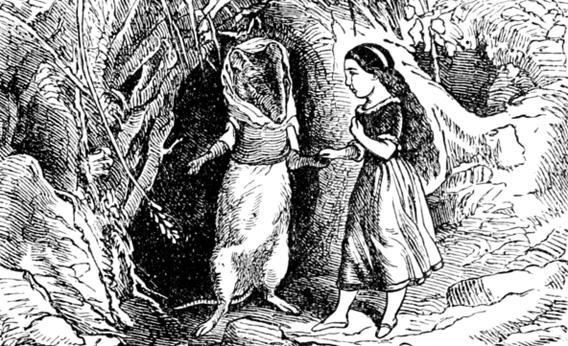Danish historian Esben Brage has discovered a previously unknown story written by Hans Christian Andersen, the 19th-century author responsible for such children’s classics as “The Little Mermaid,” “The Emperor’s New Clothes,” and “The Princess and the Pea.” Kids still read Andersen’s oeuvre, but very few pre-Andersen children’s stories remain popular. What did children read before the era of Hans Christian Andersen?
Epic poems, religious literature, romances, and Aesop. Scholars argue over when children’s literature—that is, books written exclusively for and read exclusively by children—came into existence. But it’s largely a debate over definitions. Even in ancient times, certain types of stories were considered appropriate for children. Archaeologists have unearthed a children’s version of the labors of Hercules from the third century written in simple language with large, spaced-out text and color pictures of the lions and the mythical hero. Greek and Roman teachers selected passages from Homer or Virgil that were learner-friendly. And there was always Aesop, the (possibly fictitious) freed slave who supposedly composed fables to illustrate a moral or ethical message. He didn’t write his works down, and we’ll never know whether children were his intended audience. We do know, however, that Aesop’s fables were a crucial part of the education of a Greek or Roman child. Such eminent writers as Plato and Aristophanes referenced Aesop, obviously expecting that their audiences would have come across the fables during their formative years.
The Middle Ages weren’t a particularly fruitful time for kiddie lit. In Europe, the Christian majority adjusted pagan fables to give them a Christian bent. The moral statements that ended many of Aesop’s fables, for example, came to include commands from God, and some of the relationships in the stories were altered to make them resemble biblical stories like Cain and Abel or the prodigal son. The fables of Avianus were read to children as well, and scholars have found versions with childlike scribblings in the margins. Medieval children also read the Psalms and the Lives of the Saints—not exactly kids’ fare, as we think of it today.
The printing press was as much of a boon to young readers as it was to adults. When the press came to England in the 15th century, some of the first books published were read by younger audiences. In addition to Aesop’s fables, which were still going strong, English children read the tales of Reynard, a talking red fox that delighted his fans by outsmarting the wealthy and powerful. English kids also read adventure books, particularly the stories of Guy of Warwick, who battled dragons and other beasts, and medieval knight Sir Gowther.
It’s still not clear, however, whether characters like Reynard were truly for children. Adults also read the stories, and no one knows whether the people who dreamed up the tales had kids in mind. Children’s literature—that is, books printed specifically for children or for parents to read to children—may not have existed in English until the 1740s, when John Newbery launched his publishing business. A Little Pretty Pocket Book, which, according to some, was the first true piece of dedicated children’s literature, was an enormous success. It had poems and songs and even came with a ball or pin cushion. (Newbery was ahead of his time in marketing as well as in children’s publishing.) Still, Hans Christian Andersen—whom contemporaries described as having the attitude of a young child throughout his life—was part of a golden age of children’s literature that has yet to be matched.
Got a question about today’s news? Ask the Explainer.
Explainer thanks Daniel T. Kline of the University of Alaska Anchorage, editor of Medieval Literature for Children; Seth Lerer of U.C. San Diego, author of Children’s Literature: A Reader’s History, from Aesop to Harry Potter; and James Schultz of UCLA.
